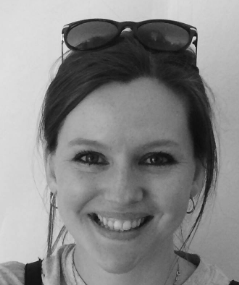Removing barriers for people with invisible disabilities

I’m one of the 70% of disabled people with an invisible (sometimes called hidden or non-visible) disability. Many disabilities aren’t immediately, or ever, visible, including mental health conditions, autoimmune conditions, and neurodivergence. Though my disabilities can’t be seen, that does not mean I don’t experience barriers to access.
For me, a huge part of my experience of having an invisible disability is the struggle to be believed, both by society but also by myself. I struggle with other peoples’ assumptions – I look fine, so I must be fine – but also my own internalised ableism: that I’m not disabled, I’m just making a fuss. I’ve often policed myself, choosing not to use disabled toilets or seats on the tube for fear of judgement from others that I don’t ‘look’ disabled.
I want to share some things the arts industry can do to remove barriers for employees and freelancers with invisible disabilities. These are based on my personal experience, so they balance practical tips with strategies for lifting the burden of proof that I, and maybe others, feel. I’d encourage everyone to also look to other incredible artists and organisations like Daryl & Co, Graeae, TourettesHero, Birds of Paradise, Unlimited and Access All Areas for guidance on how to work inclusively.
- avoid disabled people having to advocate for or explain their needs. In my experience, it can be easy for people to forget what they can’t see, so the responsibility falls on the disabled person to offer reminders. This can feel like having to evidence your disability, which is daunting.
- ensure that access audits and access riders are active documents. (You can find an example access audit here and access rider template here). The Access Lead should be really familiar with the contents and offer regular opportunities to update the information
- don’t ask people to disclose more than they want to. The hidden nature of invisible disabilities can make it difficult to understand how they impact a person’s life. However, it’s important to accept and believe the access information offered to you.
- frame accommodations as a statement, not a question. Rather than asking if someone would like a break, or like to use the Quiet Room, build breaks into all sessions and make clear the Quiet Room is always available. Making lots of choices can be tiring, and when your choices might impact on the people you’re working with – for instance, by pausing a meeting – it’s easy not to prioritise your needs.
- don’t be afraid to be proactive. For instance, an artist might need regular rest breaks but get into a work flow and lose track of time – it’s okay to gently draw attention to the time and suggest a pause.
- be aware of dynamic disabilities. Some invisible disabilities mean a person might be able to do certain things on some days but not on others. Create an open, flexible environment so that this can be communicated and accommodated without judgement.
Finally, remember that many people have both visible and invisible disabilities. The most important guidance is perhaps the most simple: “Do not make assumptions. Everyone’s experience is unique.”
Header image by Ananya Rao-Middleton. Ananya is a disabled illustrator and activist. You can find out more about her work here
